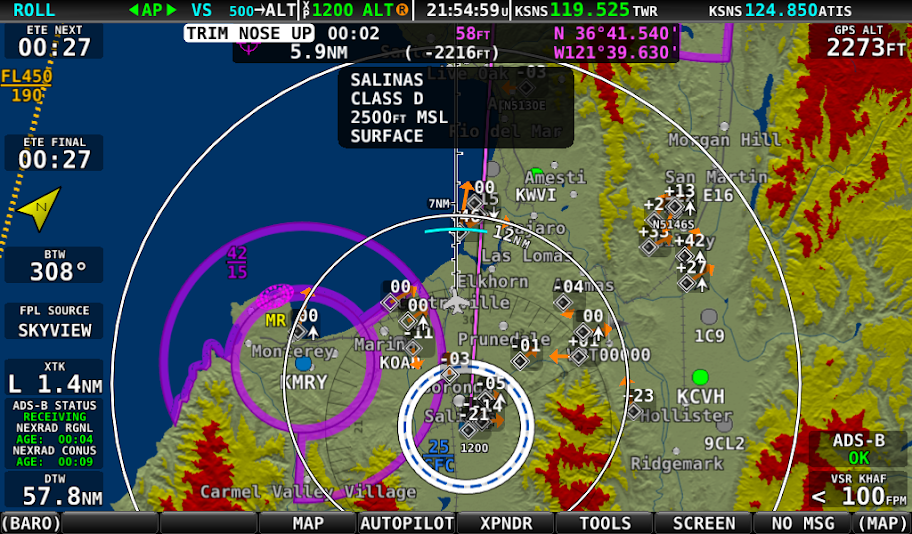douglassmt
Well Known Member
I suspect as ADS-B becomes more widespread (the traffic portion specifically) these types of incidents (or not incidents) will become more commonly reported. Yesterday I was descending into Prineville, OR from the east about 20-30 miles out. Suddenly I noticed a target directly in my flight path about 5 miles out, opposite direction, 1000 feet below me and climbing - and fast. I was in a cruise descent so I was smoking too. Somewhat unusual for where I live, this target had it's N number displayed indicating that he has ADS-B out. I stopped my descent, diverted left, and he almost simultaneously diverted to his left but kept climbing. It was almost like we could see each other  After he passed on my right a few miles away I got a glimpse of him and noted the N number from the target on the screen. After landing I checked the N number and it was an Agusta helicopter, I'm guessing a Life Flight unit based on the N number.
After he passed on my right a few miles away I got a glimpse of him and noted the N number from the target on the screen. After landing I checked the N number and it was an Agusta helicopter, I'm guessing a Life Flight unit based on the N number.
The lesson (and this isn't the first) is that this was as close a potential mid air as I have had but that it was easily and safely avoided because both of us had ADS-B. This is NOT busy airspace but it could easily have happened nevertheless. Put me down as a fan of ADS-B.
The lesson (and this isn't the first) is that this was as close a potential mid air as I have had but that it was easily and safely avoided because both of us had ADS-B. This is NOT busy airspace but it could easily have happened nevertheless. Put me down as a fan of ADS-B.






